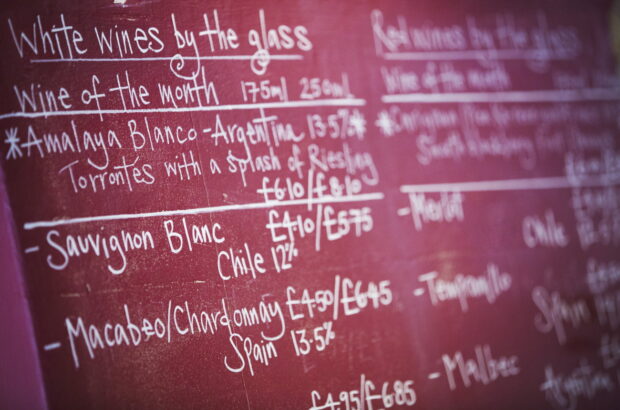'Not all my (still) working life is involved with cellar rarities'
I’ve been looking through my current tasting book for recent notes to see some of the highs and lows. Perhaps I should say from the start that not all my (still) working life revolves around rarities from country house cellars, as detailed last month; indeed, these have been few and far between of late.
Unquestionably to me, the most interesting and valuable tastings I attend are the verticals, such as those of Pichon-Longueville and Branaire-Ducru, also touched on in last month’s article, and the quality wine dinners with friends or at clubs, such as the bi-annual Saintsbury Club held at London’s Vintners’ Hall, with their ambience and lively company. (I nearly wrote ‘lively intercourse’ but this might suggest that strange things go on at these dinners. It’s not like the 18th century – well, not in the circles I keep!)
Much of my wine consumption is at home where Daphne and I have a glass or two, mainly inexpensive claret, at lunch and in the evening. But we also tend to eat out more and more, though not, I hasten toadd, at any temples of gastronomy – for three reasons. First, I am ashamed to admit that I prefer plain fare to chef’s concoctions which are preceded by delectable nibbles that spoil one’s appetite, and all sorts of sweetmeats at the end when one has no room. The second reason is that I would prefer to spend my money in other ways. Thirdly, we have pretty good wines at home. (The exception, as I have mentioned in previous articles, is our annual birthday lunches at The Waterside Inn in Bray. And agrouse dinner at Wiltons in London’s St James’s.)
We like Italian food and patronise several decent restaurants which abound in the Fulham-Chelsea-South Kensington triangle and serve moderately prosperous yuppies, professionals and, noticed on my walks and cycle rides, an inordinate number of babes in prams. The wines also tend to be rather youthful, from 2008 and even 2009. Recently we’ve enjoyed a totally delicious Fiano and superior Pinot Grigio from Sicily – can’t recall the producers.
Moving up a notch, I have quite a few bottles of Michele Chiarlo’s wine, but always feel guilty about not allowing them enough time to mature. His Barolos would clearly benefit from 10 to 15 years’ bottle age, yet we recently enjoyed his 2006 Tortoniano. It is the sort of red that I pour into an open jug to give it a bit of air. This particular wine, with an impressively deep, purple tinge was, despite its sweet entry, very hard and unyielding yet,after a couple of hours, was delicious – a sort of brambly fruit concoction, its tannic finish perfect with roast beef.
At the Berry Bros & Rudd launch of Jasper Morris MW’s erudite tome Inside Burgundy (see last month’s issue for a review), several other top-class wine merchants had been invited to show their wares. Just a few wines each, but they rose to the occasion. Wines from the Mâconnais have always appealed. Once it was only JJ Vincent and his Pouilly-Fuissés, now there are others, and one I particularly enjoyed was from Domaine Barraud – the Les Crays Vieilles Vignes 2007. Like a lot of whites nowadays it was so pale as to be almost colourless; spicy, delicious nose and taste. At the next table, another 2007 – a superbMorgeot, Chassagne-Montrachet 1er cru from the utterly dependable Domaine Ramonet (I always equate Ramonet in the Côtes de Beaune with Domaine Rousseau in the Côtes de Nuits). Once again, very pale; glorious, rich nose. Its depth of bouquet and great length on the palate spelled class. Dry. Oaky but integrated. A bit of bottle age perhaps. Focusing on 2007s to get a hang of the quality and style of this vintage, I could not resist Domaine Bruno Clair’s Chambertin-Clos de Bèze of a quality infrequently encountered at tastings. Perhaps not quite five-star, but certainly four plus.
At random, at another tasting, Château Rieussec 1998 – a vintage not tasted since its extreme youth.Perhaps it beckoned as it was in a line-up of mainly unexciting 2002s and 2004s, exuding the most glorious scent, with flavour to match. By contract (and admittedly tasted briefly in a muddled line-up) a distinctly uninteresting 2001 Yquem that I can only describe as pale and loitering. A definite low.
Another unexpected horror, this time fromEtienne Sauzet – another domaine, like Yquem, that I would have expected more from. This one was his Les Referts, Puligny-Montrachet 1er Cru 1997. My notes merely say ‘curious’, ‘on the lean side’ and ‘showing its age’. Disappointing. And then my first 2010 – from the southern hemisphere, of course – and a favourite grape, Viognier, this one from La Playa in Chile’s Colchagua Valley. Remarkably good flavour and balance. Definitely four stars, and in the same league as the Viognier from Barboursville, Virginia, I wrote about, glowingly, in the August 2009 issue.
Finally an extremely good Rioja: Marques de Murrieta’s Finca Ygay Reserva 2004, the eighth and last wine at a Christie’s Wine Course session Iconducted in September. Now showing some maturity it had a rich, rather figgy nose, distinctly sweet, alcohol a tolerable 14%. Simply delicious.
Written by Michael Broadbent






